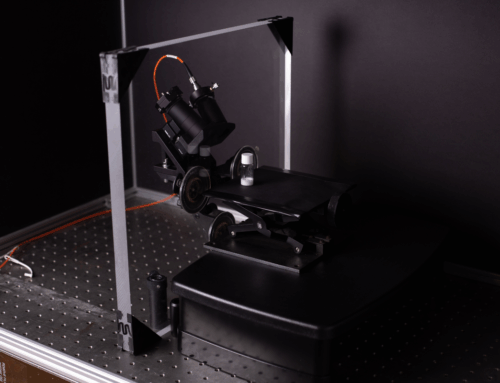Diary of an experimental investigation of a new 3 mm fibre compatible Raman spectrometer (HES 2003)
This is the first of several blog entries discussing experiments on one of our HES range of the spectrometers. The plan is to provide our customers and supporters an insight into how our innovations are developed at ISI. To show some of the frustrations as well as the achievements when as you develop new products.
Background
The HES range of systems use a static Fourier transform spectrometer at their core. This allows them to achieve a much greater etendue (a.k.a throughput) than a traditional spectrometer. Our standard system is compatible with a 1 mm optical fibre input with a 0.22 NA and does not require a slit (therefore collecting light) to obtain the desired resolution.
In order to increase the amount of light the spectrometer can capture further, we have developed a design a system based on our standard HES range that is compatible with a 3mm diameter fibre.
The plan is to construct a benchtop prototype system to investigate a number of investigate unknowns and determine whether issues exist in making spectral measurement on this scale. A series of experiments will be conducted to prove the performance of the instrument.
Objectives
The plan of the experimental campaign is to investigate the following:
- Confirm the etendue advantage of the instrument up to 3 mm fibre input.
- How much improvement does a 3mm input provide compared with a 1 mm input when performing transmission Raman measurements ?
- Examine if fluorescence in the fibre becomes a problem when using a large multicore fibre bundle
- Could a liquid light guide be used instead of an optical fibre and what would the performance difference be?
Risks / Issues
There are a number of risks/ Issues that we expect during the programme of work they include:
- In order to achieve the larger fibre input we must use larger diffraction gratings. We would expect the surface of the gratings to be less flat than those used in the HES 2000 systems. This may influence the performance.
- To achieve the 3 mm input we are using a 19 core fibre bundle, these many fibres may introduce a fluorescent issue
- The large core means the Raman collection rig will be more sensitive to unwanted Rayleigh scattered light. This must be carefully baffled.
- Someone forgets to take the lens cap off the system or open the shutter on the laser wasting weeks of frustrating effort. (you will be surprised just how often this happens)
- To confirm the etendue the system, we will use different fibres, from 0.5 – 3 mm diameters. To confirm the performance, the alignment of the system must be maintained carefully for each fibre input.
The Experiment
The spectrometer specifications are given in Table 1
| Parameter | Value | Notes |
|---|---|---|
| Grating Lines | 60 g/mm | Reflective gratings |
| Spot | 30 mm | 3600 Resolving power |
| Resolution per pixel | 3.6 cm-1 | |
| Spectral range | 150 -2900 cm-1 | |
| Detector | 1650 × 200 cooled CCD | 16 µm pitch
Dark noise < 0.004 e/s/pix |
| Instrument FOV | 23 mrad | |
| Fibre input | Compatible with fibres up to 3.1 mm in diameter | NA= 0.22 |
| Laser | 785 nm
600 mW |
We chose to conduct the experiment with a transmission Raman setup. This ensured the target emission has a larger etendue than can be accepted by spectrometer fiber, ensuring the fibre is filled. Once this was set up, the fibre connecting the Raman rig to the spectrometer could be swapped and the corresponding performance of the instrument measured. An illustration of the rig is given in Fig 1
Fig 1 Illustration of Transmission Raman collection assembly






